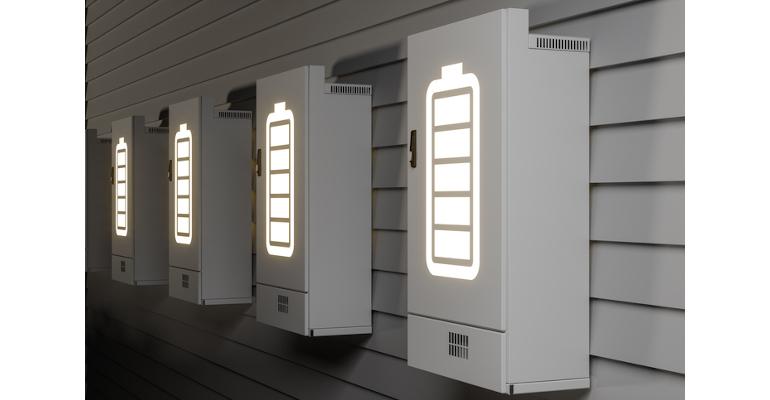
As the first generation of electric vehicles starts to retire en masse, their used batteries—which still have life in them—represent a largely untapped resource. EV battery storage systems can be connected to active or unused power stations to serve as backups during grid failure. However, since a lithium-ion battery storage station is potentially hazardous, plant operators must implement strong battery management system standards to make functional safety a priority. Here are five reasons why.
1. Enhancing Public Trust
EV battery storage is a relatively new concept, with the first lithium-ion battery storage facilities cropping up around 2010 in the United States. Therefore, this is a crucial period for building the public’s trust in the technology.
Establishing strong functional safety methods for storage facilities will go a long way toward creating a good reputation for the practice. Doing so will help the renewable battery industry stay on track to grow 14% annually through 2030, reaching its projected market worth of $322 billion by the end of the decade.
2. Preventing Shutdowns
The purpose of a lithium-ion battery storage system is often to prevent blackouts. In the event of a grid failure, the EV battery storage station can take over, providing power to homes, businesses, and critical infrastructure.
In other words, the batteries are a failsafe—if they should fail, hospitals, prisons, airport control towers, and other buildings that need backup power might have to rely on generators. Homes could lose power during heat waves or winter storms. Strict battery management system standards prevent costly and dangerous shutdowns.
Making the grid more reliable is also increasingly important as much of the world transitions to an electric economy. The spread of EVs is only possible thanks to charging stations, and as more people charge their vehicles at home, having a stable energy supply is crucial.
3. Protecting Human Lives
The battery energy storage system (BESS) at Moss Landing Power Plant—which can store up to 730 megawatt hours (MWh) of energy—made headlines in 2022 when a battery at the facility caught fire, shutting down the adjacent highway and forcing residents to shelter in place. Officials disconnected the BESS from the grid as a precaution as firefighters battled the flames.
Although nobody was injured in the blaze, the fire sparked a discussion about the safety of battery storage facilities. Lithium battery fires from overheated e-bikes and other devices have already claimed several lives in recent years. As lithium-ion batteries become more ubiquitous, establishing strong functional safety protocols will be vital.
Functional safety is paramount at storage facilities that daisy-chain thousands of battery units in a series. If one battery catches fire, it can potentially cause a domino effect throughout the facility and lead to a catastrophic explosion. The fail safes at these facilities protect workers and surrounding residents against burns, flying debris, and smoke inhalation from fires.
4. Safeguarding the Environment
In addition to being dangerous for nearby workers and residents, battery failures pose a serious risk to the environment.
Many EV battery storage stations are connected to renewable energy plants. Solar farms are often located in hot, dry, sunny locations, and wind farms—it goes without saying—usually occupy windy locales. Both tend to be far from emergency services. Coupled with a battery explosion, these conditions are the perfect recipe for a rampant wildfire. Climate change can further exacerbate wildfires and make them more severe and hard to extinguish.
Burning lithium-ion batteries also emit chemicals such as toxic hydrogen fluoride and potentially hazardous phosphoryl fluoride into the air, posing a pollution risk. Functional safety measures prevent environmental disasters near EV battery storage stations.
5. Complying With Regulations
Federal, state, and local laws guide the operation of battery energy storage systems. For example, the U.S. Department of Energy specifies that all electrical components in a BESS must be labeled to identify their size, manufacturer, hazard warnings, and several other qualities. Contractors must continually monitor storage facilities and provide summaries of all repairs and replacements. There must be both visual and audible alarms present in battery storage stations.
These laws exist to promote functional safety within a battery storage operation. Following them keeps workers safe and helps companies avoid fines and penalties. It also gives companies a better reputation, increasing support from the public and investors.
Improving EV Battery Storage Safety
Using spent EV batteries to store excess energy solves several problems. It allows renewables like wind and solar to power the grid even at night and during periods of high demand. It can prevent expensive, dangerous blackouts, and it gives used car batteries a second life rather than sending them to a landfill.
Although lithium-ion batteries have a reputation for starting fires, it’s possible to manage them without incident—even at a large scale—by implementing strong functional safety guidelines. As more EVs retire, these regulations will protect the environment, human lives, and public trust in battery storage solutions.
